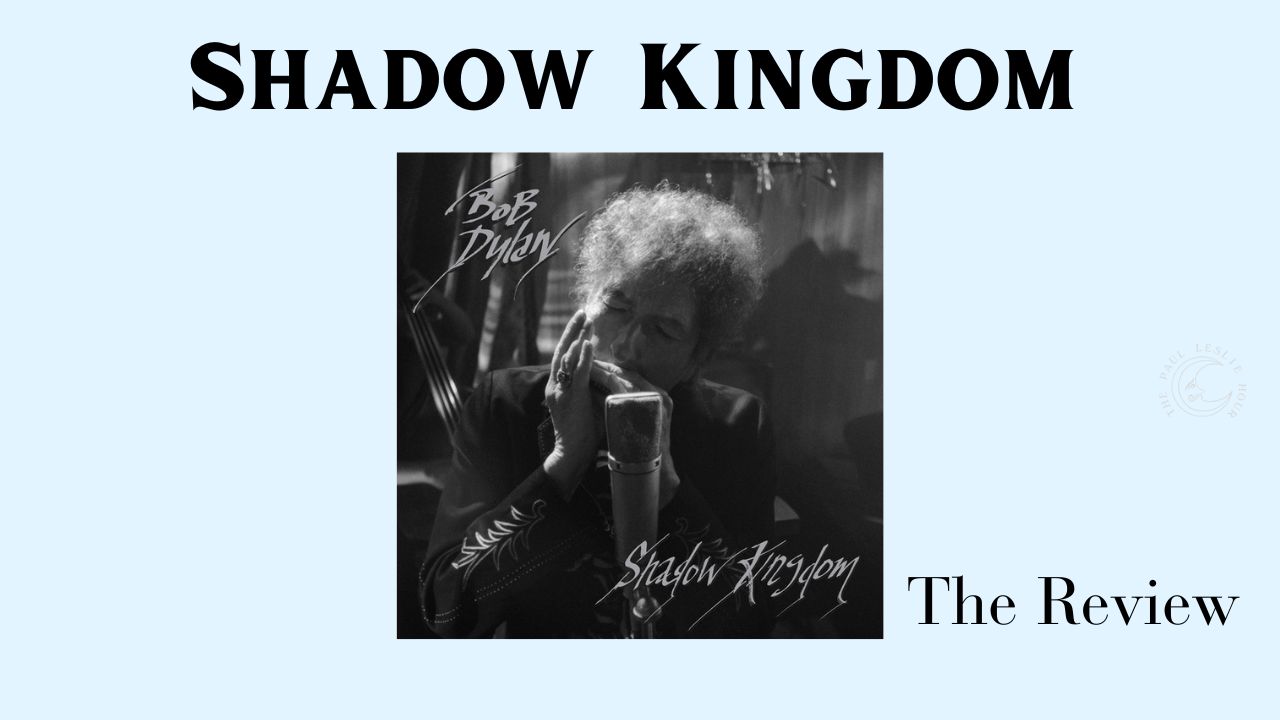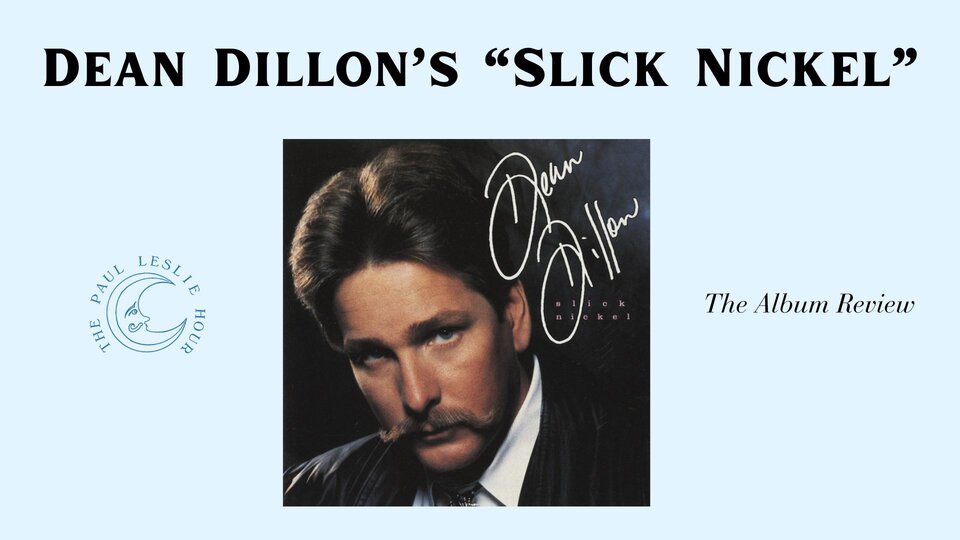Are you here? It’s The Paul Leslie Hour with a review of Bob Dylan’s album Shadow Kingdom!
After listening to Shadow Kingdom twice, Paul picked up pen and paper and wrote down his immediate impression and thoughts. What we have here is exactly what Paul wrote, just one line crossed out.
Let’s hear one guy’s take on Bob Dylan’s Shadow Kingdom record.
Yesterday I listened to the Bob Dylan studio album Shadow Kingdom. The first exposure to these recordings was in the video stream of the same title. My first time seeing Shadow Kingdom, in the visual format, I was unsure of what to think. It didn’t look like the other streaming events that were going on, this one had a much higher production value. The black and white art film look was clearly pre-recorded, and I enjoyed it.
Shadow Kingdom album was released on CD and vinyl
Fast-forwarding to yesterday, I listened from beginning to end to Dylan and the musicians’ aural offerings. As someone who prefers audio over audio/visual, it all felt so different. They had billed Shadow Kingdom as “The Early Songs of Bob Dylan.” All of the material was familiar, by with the visual stimuli removed, I realized this was a re-imagination.
It seems a lot of singer-songwriters eventually get around to reinterpreting their work as they get older. To name just a few artists that Dylan has praised: Gordon Lightfoot, Jimmy Buffett and Randy Newman all went back to breathe new life into songs written decades ago. It’s only natural that an artist would want to explore a new feeling for something that has endured.
Shadow Kingdom is a new approach to Dylan’s songs
On Shadow Kingdom, it is a new approach indeed. I noticed only stringed instruments, and accordions, which by the way sound magnificent with these songs. Plus, some occasional harmonica from Dylan.
The musicians who helped make Shadow Kingdom include Jeff Taylor, Greg Leisz, Tim Pierce, T. Bone Burnett, my friend Ira Ingber, Don Was, John Avila, Doug Lacy and Steve Bartek.
Some of the songs sound like they have a jug band or skiffle feel to them. “Tombstone Blues” is delivered like spoken word art, with the band accompanying. Bob Dylan delivers each lyric with emphasis, while keeping his different style of song-delivery. I wouldn’t want it any other way. His singing is especially noteworthy: more impressive than the Rough and Rowdy Ways record that preceded this.
Dylan and the band performed some stellar interpretations
There are some standout performances: “What Was It You Wanted,” the newest of the songs on Shadow Kingdom, appearing first on the 1989 Oh Mercy. I love the new incarnation. The tender delivery of “Forever Young” is special and was released as a music video. It’s somewhat lullabyesque here, which is not a bad thing. The bluesy “Pledging My Time” also adds to the middle of the album where things seem to reach a climax.
Another thing that’s so pleasing about listening to Shadow Kingdom is the incredible transitions that barely feel like the songs are changing. It feels like it’s all one tapestry.
Listening to Shadow Kingdom inspired a revisit of the film version
Listening to Shadow Kingdom piqued my curiosity enough to revisit the film version. Getting an ear for the songs, I appreciated the visuals more. Sometimes what we see can dilute what we hear. But I can understand or at least try to imagine what Dylan was doing with this new, permanent record of these enduring songs.
The album ends with “It’s All Over Now Baby Blue,” and it feels like a fitting farewell for now, and then we’re given an instrumental conclusion: “Sierra’s Theme” giving a mysterious melody to allow you to reflect on what you just heard.
If you count this as the 40th studio album, and I think I would, it occurs to me that this could be the last. But then I think of Willie Nelson still going at 90 years old. It feels like a gift when I listen to great songs. It never gets old and my bet is that Bob Dylan has much more to say. What else does that imagination have in store for us?


